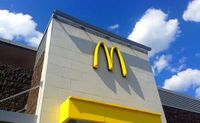McDonald’s, long known as the go-to spot for a quick and affordable meal, is taking decisive action to win back budget-conscious customers. Starting in September 2025, the fast-food giant will slash prices on eight popular combo meals, offering them at 15% less than if the items were purchased separately. This move, widely reported by outlets such as CNN, The Wall Street Journal, and The Independent, comes after months of mounting criticism over rising prices and a growing perception that McDonald’s had lost its value edge.
For many, the days of grabbing a meal at McDonald’s without breaking the bank seemed like a distant memory. In 2023, a viral tweet showing a Big Mac combo meal priced at nearly $18 ignited outrage online, with customers lamenting how the once-affordable chain had become a pricey indulgence. "McDonald’s used to be the escape when rent was due and payday was far," one social media user complained, while another wrote, "Now a ‘value meal’ is $14 and the value is gone… When people can’t even afford McDonald’s, the economy is already broken." According to The Independent, these sentiments captured a broader unease among consumers, especially those hit hardest by inflation and stagnant wages.
McDonald’s CEO Chris Kempczinski did not shy away from the criticism. Speaking on the company’s August 6 earnings call, he acknowledged, "Consumers’ value perceptions are most influenced by our core menu pricing." He admitted that value-minded customers were "too often" seeing combo meals priced above $10, which was "shaping value perceptions in a negative way." Kempczinski told analysts, "The single biggest driver of what shapes a consumer’s overall perception of McDonald’s value is the menu board. And it’s when they drive up to the restaurant and they see the menu board, that’s the number one driver. We’ve got to get that fixed."
The upcoming price cuts are part of a broader effort to restore McDonald’s reputation for affordability. The company will revive its “Extra Value Meals” branding—first launched in 1991 but shelved during the COVID-19 pandemic—with new deals such as a $5 Sausage Egg McMuffin breakfast and an $8 Big Mac and McNugget special. These offers will roll out in September and November, respectively, according to The Independent and Effingham Radio. Joe Erlinger, president of McDonald’s USA, summed up the company’s new direction: "Customers are telling us they need more of the everyday value and affordability that defines the McDonald’s brand."
The company’s decision is not just about optics—it’s also a response to real business challenges. McDonald’s has seen a dip in sales among low-income diners, a demographic that once formed the backbone of its customer base. As Kempczinski explained during a recent call, "There is a lot of anxiety and unease with that low-income consumer," pointing to factors such as tariffs and a slowdown in real income growth. According to data cited by The Wall Street Journal, the average large Big Mac meal now costs $10.53, but prices can vary widely—from as low as $5.69 to as much as $18.99 depending on location. Combo meals priced at $10 or more, Kempczinski noted, could be deterring lower-income customers.
To sweeten the deal for price-conscious diners, McDonald’s is also rolling out app-specific promotions, including free medium fries with $1 purchases and discounts for new users. These digital deals are designed to drive engagement and encourage repeat visits, especially among younger and tech-savvy customers. The company’s $5 value meal, introduced last year, temporarily stabilized sales and helped grow traffic among low-income consumers for the first time in over a year, according to McDonald’s CFO Ian Borden.
Of course, cutting prices comes at a cost. McDonald’s and its US franchisees have agreed to the 15% price reduction, but the company plans to subsidize franchisees to offset losses from the lower prices. This calculated trade-off—accepting thinner margins in exchange for recalibrating customer perceptions of value—reflects a broader industry trend. As reported by CNN, the company’s leadership believes that restoring affordability is essential to winning back lost customers and stabilizing the brand’s reputation in a fiercely competitive market.
The strategy appears to be resonating with investors, albeit modestly. On August 21, McDonald’s stock edged up 0.04%, with a trading volume of $0.71 billion, ranking 98th in market activity, according to AINVEST. While the stock’s muted performance reflects broader market uncertainty, it also signals cautious optimism as the company pivots to address customer concerns.
McDonald’s efforts stand in sharp contrast to the broader trend of rising prices across the consumer landscape. As The Wall Street Journal and Marketplace have reported, other major corporations—including Sony, Home Depot, Procter and Gamble, and Walmart—are raising prices in response to tariffs and supply chain pressures. Even electricity costs and housing expenses are climbing at rates that far outpace inflation. Federal Reserve Chair Jerome Powell has noted that some companies are taking advantage of the environment to push prices higher, regardless of their actual costs.
This economic squeeze has political ramifications, too. Inflation and affordability have become central issues in the 2025 election cycle. President Donald Trump’s tariffs are cited as a key driver of price hikes, and his poll numbers have suffered as a result. Democrats, on the other hand, are campaigning on lowering the cost of living, with candidates from Virginia to New York City touting plans to ease voters’ pocketbook struggles. Yet, as The Washington Post’s Heather Long recently observed, the ‘K-shaped’ economy—where the wealthy fare far better than the rest—means that simply reversing tariffs won’t solve all inflation woes. The top 10% of households now account for roughly half of all consumer spending, making it tempting for companies to target the wealthy rather than broaden their customer base.
Against this backdrop, McDonald’s return to value pricing is both a business and a branding gamble. By subsidizing franchisees and rolling out aggressive promotions, the chain hopes to reclaim its reputation as the affordable fast-food leader. Whether this strategy will be enough to reverse declining visits from low-income consumers and restore trust remains to be seen. But for now, McDonald’s is betting that a few dollars off a combo meal could make all the difference for customers—and its bottom line.






